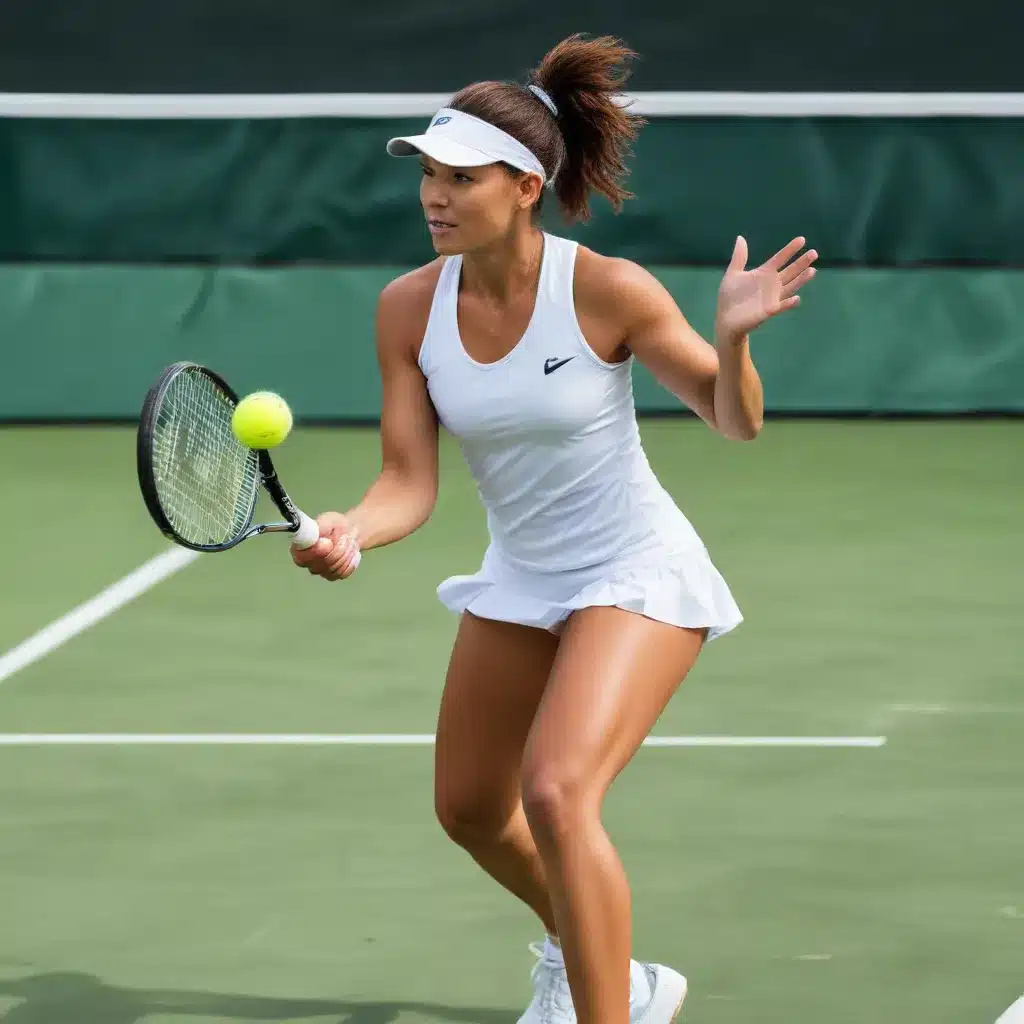
Unlocking the Power of the Mind: Enhancing Tennis Performance in London
In the dynamic world of tennis, where the margin between victory and defeat can be razor-thin, the importance of mental preparation and visualization techniques cannot be overstated. As tennis enthusiasts and coaches in London, we are constantly seeking ways to elevate our game and stay ahead of the competition. One such avenue that has gained significant traction in recent years is the application of visualization and mental imagery practices.
Harnessing the Power of Visualization
Visualization, a powerful mental exercise, has been widely adopted by elite tennis players and coaches alike. The process involves creating vivid mental representations of successful tennis performances, from the perfect serve to the effortless execution of a winning volley. By engaging in this practice, players in London can tap into the subconscious mind, priming their bodies and neural pathways for the physical execution of these skills.
Cliff Richard Tennis, a renowned coaching hub in London, has been at the forefront of incorporating visualization techniques into their training programs. According to their lead coach, “Visualization allows our players to experience success mentally before they physically execute it on the court. This not only boosts confidence but also reinforces the neural connections needed for optimal performance.”
One particularly effective visualization exercise is the “Rehearsal Routine,” where players mentally walk through the entirety of a match, from the pre-match warm-up to the final point. By immersing themselves in this mental simulation, players can anticipate and prepare for various scenarios, developing a sense of control and resilience that can be invaluable during high-pressure moments.
Leveraging Mental Imagery for Skill Development
Alongside visualization, mental imagery has emerged as a complementary tool in the tennis coaching arena. While visualization focuses on the overall performance, mental imagery zeroes in on the refinement of specific technical skills. This approach involves players mentally picturing the intricate details of their swing mechanics, footwork patterns, or court positioning.
“At our tennis academy in London, we encourage our players to dedicate a portion of their training time to mental imagery,” explains the head of the sports psychology department. “By mentally rehearsing the precise execution of a forehand or backhand, our players can solidify the neural pathways and muscle memory required for consistent, high-quality shots.”
The benefits of mental imagery extend beyond the technical aspects of the game. Players can also use this technique to visualize their emotional and psychological responses to various in-match scenarios, such as managing nerves, maintaining focus, or regaining composure after a setback.
Regulatory Compliance and Best Practices
As with any training regimen, it is crucial to ensure that visualization and mental imagery practices adhere to the Sports Ground Safety Authority (SGSA) guidelines in London. The SGSA, the governing body responsible for regulating sports facilities and events, has established a comprehensive set of protocols to maintain the safety and wellbeing of players, coaches, and spectators.
One key regulation stipulates that all training programs, including those involving mental exercises, must be supervised by qualified coaches or sports psychologists. These professionals are tasked with ensuring that the visualization and mental imagery practices are tailored to the individual player’s needs and are implemented in a safe and effective manner.
Moreover, the SGSA recommends that tennis clubs and academies in London allocate dedicated spaces for mental training sessions, providing a quiet and distraction-free environment conducive to optimal focus and concentration.
The Cost Considerations
Integrating visualization and mental imagery practices into one’s tennis training regimen can have a tangible impact on the overall investment required. However, the long-term benefits of these techniques often outweigh the initial costs.
At Cliff Richard Tennis, the cost of incorporating visualization and mental imagery into a comprehensive training program typically ranges from £50 to £100 per session, depending on the player’s experience level and the complexity of the exercises. This fee covers the guidance of a qualified sports psychologist, access to specialized training facilities, and the development of personalized mental training plans.
For players who prefer a more independent approach, there are also affordable resources available, such as online visualization and mental imagery workshops, which can cost between £20 and £50 per module. These self-guided programs provide the necessary tools and techniques for players to integrate mental training into their daily routines.
Advancements in Tennis Technology
The rapid advancements in tennis technology have also contributed to the evolution of visualization and mental imagery practices. The emergence of virtual reality (VR) and augmented reality (AR) applications has revolutionized the way players in London can immerse themselves in simulated match environments and hone their skills.
Leading tennis technology companies, such as TennisAVR, have developed cutting-edge VR platforms that allow players to experience lifelike tennis scenarios, from facing a serve to returning a powerful groundstroke. These virtual simulations not only enhance the visualization process but also provide valuable feedback on technical execution and decision-making.
Furthermore, the integration of biofeedback sensors and AI-powered analysis tools has enabled players and coaches to gain deeper insights into the physiological and psychological factors that influence on-court performance. By leveraging these technological advancements, tennis enthusiasts in London can fine-tune their mental training regimens and optimize their overall development.
Conclusion
In the dynamic world of tennis, the power of the mind cannot be underestimated. By embracing visualization and mental imagery practices, players in London can unlock new levels of performance, resilience, and overall enjoyment of the sport. Whether it’s refining technical skills, managing pre-match nerves, or anticipating and responding to in-game scenarios, these mental training techniques have proven to be invaluable assets in the pursuit of tennis excellence.
As you embark on your journey to elevate your tennis skills, remember to prioritize the integration of visualization and mental imagery into your training regimen, while ensuring compliance with local regulations and leveraging the latest advancements in tennis technology. With a holistic approach that nourishes both the physical and mental aspects of the game, you can unlock your true potential and experience the thrill of reaching new heights on the tennis court.

